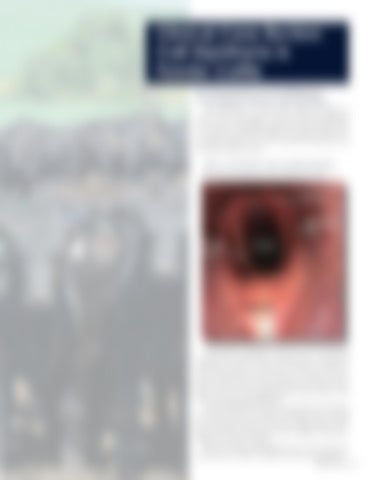Clinical Case Review: Calf Diphtheria in Feeder Cattle By: Dr. Kip Lukasiewicz, Dr. Tom Noffsinger, and Dr. Dan Thomson, Production Animal Consultation
Calf diphtheria is a disease that affects the larynx or voice box of cattle (figure 1). Most commonly, diphtheria cases occur in young, light weight cattle. The causative agent is a bacterium named Fusobacterium necrophorum which is an anaerobic organism that is also commonly cultured in foot rot and liver abscess cases. Figure 1: Normal larynx and vocal folds identifying the narrowest portion of the respiratory system
Fusobacterium necrophorum is present in the environment and the gut of cattle without causing disease (a commensal organism). However, if some sort of insult or irritant creates an opportunity for these bacteria to colonize, a disease process can occur. Cuts in the skin between the hooves can lead to foot rot, and a small ulceration in the surface of the larynx can lead to calf diphtheria. Cattle with diphtheria are first noticed by the sounds that occur when they try to breathe. The plaque that is formed by the bacteria growing on the larynx along with the swelling of the larynx itself obstructs the windpipe and makes it difficult for cattle to breathe. The noise heard with diphtheria cases occurs when the cattle draw in a breath or inspire air. Noises heard during
pacdvms.com 27

















